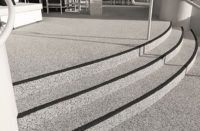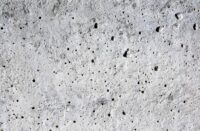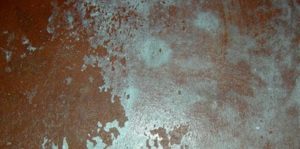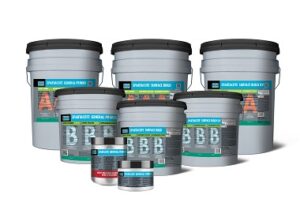High-performance or high-build coatings offer a higher level of performance than thin-build sealers. A brilliant insight, I know. But in reality, the statement often sums up most of what many people know about high-performance coatings compared to thin-build sealers.
This explains why I am often asked the question that is the subject of this column.
Question: What is the difference between a sealer and a high-end coating?
For years, I have been using the analogy of toothpicks and cooked spaghetti noodles when comparing sealers to coatings. When you drop a bunch of toothpicks on a table you can see how they tend to line up. You get limited places where they touch and lots of voids or places where you can see right through the pile. Now look at a bowl of cooked spaghetti. This is a dense mesh of noodles that has virtually no voids, and you can’t see the bottom of the bowl.
With the images of toothpicks and spaghetti fresh in your mind, you now possess all you really need to know to differentiate between sealers and coatings. Read on to complete the picture and bring it all together.
Thin-build (or traditional) decorative concrete sealers are for the most part single-component acrylics. This means the resin (the solid part of the sealer that remains on the concrete surface) is some form of acrylic polymer dissolved or dispersed in a liquid solvent (which can be water or a blend of more aggressive solvents such as xylene, acetone and TBAC).
Acrylics are the most popular sealer used in the decorative concrete industry, hands down. Their cost, performance and relative ease of application is what makes them so popular. Solvent-based acrylics tend to darken the substrate, enhancing the final color with a gloss finish, while water-based acrylics provide more of a natural matte or satin appearance.
Discovered in the 1890s, acrylic plastic really took off when Plexiglas became a staple for military aircraft canopies during World War II. One of the big benefits of acrylic plastic was its ability to weld to itself seamlessly after being melted — this characteristic is exploited to this day when you reapply or fix solvent-based acrylic sealers. They range from high-quality pure acrylic sealers to styrene acrylic-based cure-and-seals to curing compounds.
While they all have distinctive and different chemistries, the one thing they have in common is an acrylic backbone that requires thin application for success. With solids content of 30 percent or less, acrylic sealers are known as thin-build sealers. They have to be applied at less than 2 mils per coat to perform properly. As a reference, a standard credit card is 30 mils in thickness.
The “toothpicks” in acrylic sealers are designed to lie down in a single layer, with limited overlap or cross-linking.
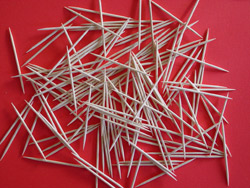 In comparison, most high-performance coatings start at 5 to 7 mils in thickness and go up from there.
In comparison, most high-performance coatings start at 5 to 7 mils in thickness and go up from there.
The other major factors that separate thin-build acrylics from high-performance coatings are their chemistry and durability. Single-component acrylics exhibit good resistance to most contaminants, but not excellent resistance like high-performance coatings do. Most acrylics are breathable, allowing the migration of soils and contamination through the coating over time. Remember the gaps between the toothpicks? This is why acrylics do not make good sealers for surfaces that are constantly wet, or where harsh chemicals and solvents are being used. What they do offer is a strong and relatively abrasion-resistant film that is cost-efficient and easy to apply. Thin-build acrylics are most often used on exterior decorative concrete. Their ability to breathe is well-suited for exterior concrete, and they provide a good level of performance for a relatively low cost.
Lastly, keep in mind that single-component acrylic sealers dry through evaporation of the liquid solvent. This is important, because in many cases rewetting the sealer with the same solvent allows for quick and easy resealing and repair of blemishes and surface defects. Unfortunately, this does not hold true when using water-based systems, which is one of the reasons why solvent-based acrylics are still the most popular on the market.
In comparison, high-performance coatings are made up of multiple resin families. The most common in decorative concrete are polyurethanes, polyureas and epoxies. Just like their thin-build counterparts, they are available in a water or solvent base, but unlike acrylics, they are usually two-part systems.
Like acrylics, high-performance resin technology came into play in the early to mid-1900s. Most of the high-performance coating technology we use today came from other industries, such as automotive or aerospace. While we all think decorative concrete is an amazing industry, creating lots of new and innovative finishes, the truth is that most of the technology we use is hand-me-down, having come from some other industry. This is especially true when it comes to high-performance coatings.
While acrylics are considered thin, high-performance coatings are thick in comparison. Think about the bowl of spaghetti.
A thicker film adds to the durability of the coating (how well it stands up to traffic and wear), as well as its chemical and abrasion resistance (how well it handles chemicals and contamination). Two-part systems also exhibit much more cross-linking, as part “A” chemically bonds with part “B” to form long chains. The reaction goes on until all of the parts have come together in a tight mesh that looks like our bowl of spaghetti.
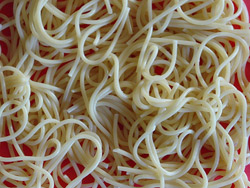 Imagine all those noodles touching each other. Every place they touch, they form a bond, and each bond adds to the overall strength, durability and performance of the coating. Once all the A’s and B’s have reacted, the coating cures and gets hard. In most cases the tight mesh is not permeable and much more resistant to chemicals and contamination. Remember how spaghetti has very few voids.
Imagine all those noodles touching each other. Every place they touch, they form a bond, and each bond adds to the overall strength, durability and performance of the coating. Once all the A’s and B’s have reacted, the coating cures and gets hard. In most cases the tight mesh is not permeable and much more resistant to chemicals and contamination. Remember how spaghetti has very few voids.
The mesh also provides extra durability when compared to single-component acrylics that do not exhibit the tight mesh network. A combination of the cross-linking “spaghetti” and thicker build is why we see high-performance coatings used in harsh or high-traffic environments where extra chemical resistance and durability are required.
High-performance or two-part systems for the most part are a one-time use. Once you mix part A and part B, the clock starts running, and the coating will cure and get hard. Once it is hard, there is no rewetting the coating with solvents like you can with single-component acrylics. This is a downside to high-performance coatings, as any damage to the film is not easy to repair and recoating the system needs to take place during the recoat window, which is usually during the first 24 hours.
So there you have it, a quick and easy overview of how sealers differ from high-performance coatings. The next time you are faced with the decision of whether to use a sealer or high-performance coating, or someone wants to know the difference, just think toothpicks or noodles.
